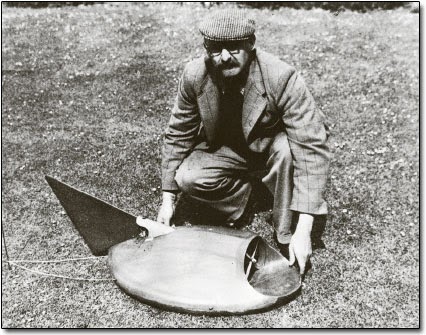Throughout history, man has been intent on improving upon ideas of moving machines for purposes of transport. One of the most successful inventions of the 20th century emerged as a result of some very unusual testing.
This Day in History: May 31, 1959
 |
Christopher Cockerell with the
|
The concept behind the hovercraft actually began centuries ago being traced back to the early 1700's, and ideas for flying machines date back to ancient Greece. Cockerel's idea allowed a vehicle to move over water's surface, floating on a layer of air, thus, reducing friction between the vehicle and the water.
World's first full-size hovercraft.
The prototype SR-N1 was used for research and development
(Source: Science & Society
Picture Library)
1700 – 1900: The Genesis of Air Cushion Vehicles
1900 – 1950: The Evolution of Air Cushion Vehicles
1950 – 1964: The Birth of the Air Cushion Vehicle/Hovercraft Industry
An Illustrated History of the Hovercraft
The money Cockerell received for his hovercraft patent didn't cover his development costs. As with so many inventors and creative individuals, he remained bitter with lack of compensation and capitalization of such an inventive idea. It is interesting to note the US naval hovercraft is still in use today.
A U.S. Navy Landing Craft Air Cushion,
an example of a military hovercraft
Image Source: en.wikipedia.org
an example of a military hovercraft
Image Source: en.wikipedia.org
You haven't seen a hovercraft, until you've seen the Zubr-class, a class of air-cushioned landing craft of Soviet design that's currently the world's largest. It's designed to sealift landing assault units (such as marines or tanks) from equipped/non-equipped vessels to non-equipped shore, as well as transport and plant mines. Read MORE...
Have you ever had your sunbathing interrupted at the beach by the landing of a hovercraft? It happens!




No comments:
Post a Comment